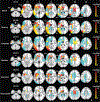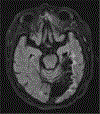Vascular Cognitive Impairment and Dementia
- PMID: 35678401
- PMCID: PMC9833847
- DOI: 10.1212/CON.0000000000001124
Vascular Cognitive Impairment and Dementia
Abstract
Purpose of review: This article gives a broad overview of vascular cognitive impairment and dementia, including epidemiology, pathophysiology, clinical approach, and management. Emphasis is placed on understanding the common underlying types of cerebrovascular disease (including atherosclerosis, arteriolosclerosis, and cerebral amyloid angiopathy) and awareness of rare inherited cerebrovascular disorders.
Recent findings: The pathophysiology of vascular cognitive impairment and dementia is heterogeneous, and the most recent diagnostic criteria for vascular cognitive impairment and dementia break down the diagnosis of major vascular dementia into four phenotypic categories, including subcortical ischemic vascular dementia, poststroke dementia, multi-infarct dementia, and mixed dementia. Control of cardiovascular risk factors, including management of midlife blood pressure, cholesterol, and blood sugars, remains the mainstay of prevention for vascular cognitive impairment and dementia. Cerebral amyloid angiopathy requires special consideration when it comes to risk factor management given the increased risk of spontaneous intracerebral hemorrhage. Recent trials suggest some improvement in global cognitive function in patients with vascular cognitive impairment and dementia with targeted cognitive rehabilitation.
Summary: Thorough clinical evaluation and neuroimaging form the basis for diagnosis. As vascular cognitive impairment and dementia is the leading nondegenerative cause of dementia, identifying risk factors and optimizing their management is paramount. Once vascular brain injury has occurred, symptomatic management should be offered and secondary prevention pursued.
Copyright © 2022 American Academy of Neurology.
Figures













Similar articles
-
Vascular contributions to cognitive impairment and dementia: a statement for healthcare professionals from the american heart association/american stroke association.Stroke. 2011 Sep;42(9):2672-713. doi: 10.1161/STR.0b013e3182299496. Epub 2011 Jul 21. Stroke. 2011. PMID: 21778438 Free PMC article. Review.
-
Vascular Cognitive Impairment.Continuum (Minneap Minn). 2019 Feb;25(1):147-164. doi: 10.1212/CON.0000000000000684. Continuum (Minneap Minn). 2019. PMID: 30707191 Free PMC article. Review.
-
Diagnosis of vascular cognitive impairment and its main categories.Neurologia. 2015 May;30(4):223-39. doi: 10.1016/j.nrl.2011.12.014. Epub 2012 Jun 26. Neurologia. 2015. PMID: 22739039 Review. English, Spanish.
-
Neuropsychological assessment and cerebral vascular disease: the new standards.Rev Neurol (Paris). 2013 Oct;169(10):779-85. doi: 10.1016/j.neurol.2013.07.009. Epub 2013 Aug 30. Rev Neurol (Paris). 2013. PMID: 23999023 Review.
-
Diagnosis and management of vascular cognitive impairment and dementia.J Neural Transm Suppl. 2002;(63):91-109. doi: 10.1007/978-3-7091-6137-1_6. J Neural Transm Suppl. 2002. PMID: 12597611 Review.
Cited by
-
Vascular cognitive impairment: Advances in clinical research and management.Chin Med J (Engl). 2024 Dec 5;137(23):2793-2807. doi: 10.1097/CM9.0000000000003220. Epub 2024 Jul 24. Chin Med J (Engl). 2024. PMID: 39048312 Free PMC article. Review.
-
Heat shock protein 70 in Alzheimer's disease and other dementias: A possible alternative therapeutic.J Alzheimers Dis Rep. 2025 Jan 13;9:25424823241307021. doi: 10.1177/25424823241307021. eCollection 2025 Jan-Dec. J Alzheimers Dis Rep. 2025. PMID: 40034501 Free PMC article. Review.
-
Dynamic retinal vessel analysis: flickering a light into the brain.Front Aging Neurosci. 2025 Jan 6;16:1517368. doi: 10.3389/fnagi.2024.1517368. eCollection 2024. Front Aging Neurosci. 2025. PMID: 39834618 Free PMC article. Review.
-
Serum uric acid to creatinine ratio in patients with early-onset post-stroke cognitive impairment: a retrospective cohort study.Front Aging Neurosci. 2025 Jul 2;17:1580722. doi: 10.3389/fnagi.2025.1580722. eCollection 2025. Front Aging Neurosci. 2025. PMID: 40671786 Free PMC article.
-
Factors affecting progression of non-Alzheimer dementia: a retrospective analysis with long-term follow-up.Front Neurol. 2023 Oct 18;14:1240093. doi: 10.3389/fneur.2023.1240093. eCollection 2023. Front Neurol. 2023. PMID: 37920834 Free PMC article.
References
-
- American Psychiatric Association. Diagnostic and Statistical Manual of Mental Disorders 5th ed. American Psychiatric Association; 2013.
-
- Willis T De anima brutorum quae hominis vitalis ac sentitiva est: exercitationes duae. Typis E.F. impensis Ric Davis, Oxon; 1672.
Publication types
MeSH terms
Grants and funding
LinkOut - more resources
Full Text Sources
Medical
Research Materials
